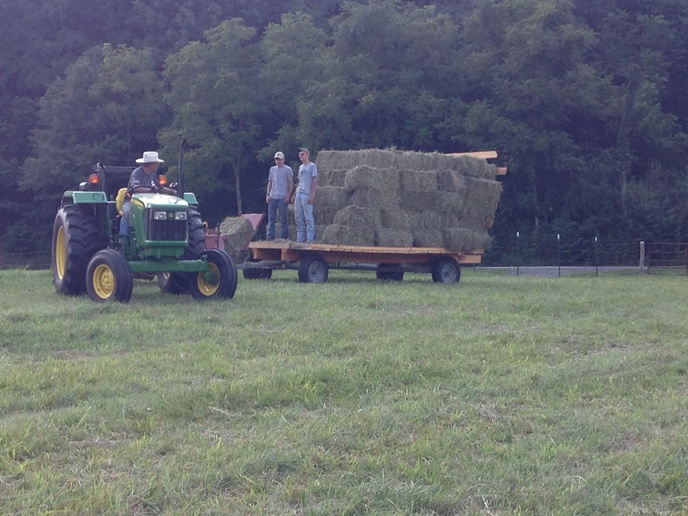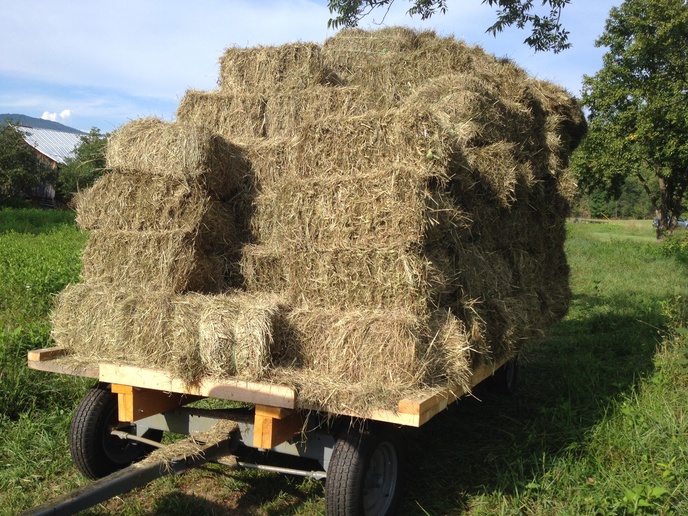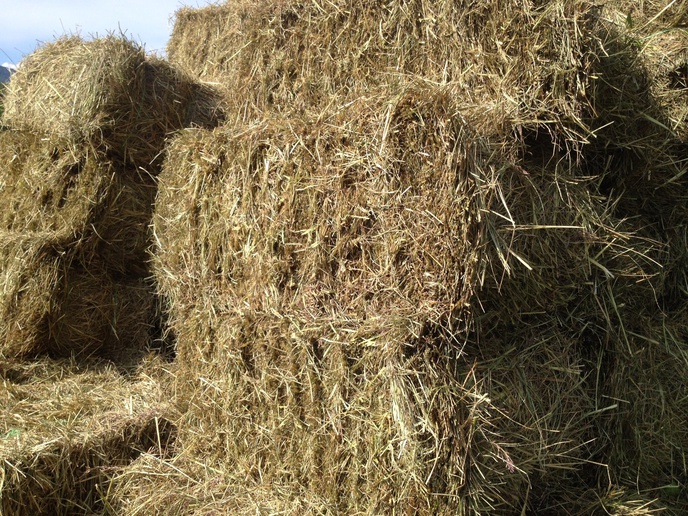We tedded, raked our hay and finally baled it - some yesterday and the rest today. About 350 bales - yield was off due to spraying for weeds LOL! Everyone helped, my Wife, daughter and two boys. The boys did a little of everything as I roll them into this hay experience - from mowing with the sickle mower, tedding, raking and baling. Probably the biggest challenge (but they are fast learners) is a full/straight windrow off the rake and stacking on the wagon such half of it don't fall off the side....
The New Holland 68 fresh off a refurb this spring, along with lessons learned from the 1st cut, cranked out tight, solid, brick shaped, IMHO - beautiful bales. Never sheared a flywheel bolt and only had a few broken bales - usually from a cold start. Ran it at 540 rpms, mostly full windrows (though thick or thin didn't seem to matter). We made 32 inch bales, give or take an inch on some - very consistent in length. We calibrated our scales and set the tension to give us a consistent 40 - 45 lb bale. We noticed after some time, if the length was set at 32 inches and the strings were tight, we could reliably get that 40ish lb bale - which is our goal. In addition to full 540 rpms, dropped the ground speed and averaged about 15 strokes per bale. The rock solid bales really helped make a steady stack on the wagon and in the barn. Very pleased with the performance of the 68 baler.
Used the MF 50 diesel to cut and rake the hay and the JD 5055d to ted and bale. Both tractors did great! The JD was unfazed with the baler full of hay and a wagon full of hay. The wagon, 14ft x 8 ft deck, was a spring project too. One thing we need to shore-uo is the back stop on the wagon. I want a little backward angle/slope to it, but what we've got holding the backstop is inadequate and the backstop started leaning back more as you can see in the pic. We'll fix that over the winter.
Next up - finish the wood pile as Summer is winding down fast.
Bill



The New Holland 68 fresh off a refurb this spring, along with lessons learned from the 1st cut, cranked out tight, solid, brick shaped, IMHO - beautiful bales. Never sheared a flywheel bolt and only had a few broken bales - usually from a cold start. Ran it at 540 rpms, mostly full windrows (though thick or thin didn't seem to matter). We made 32 inch bales, give or take an inch on some - very consistent in length. We calibrated our scales and set the tension to give us a consistent 40 - 45 lb bale. We noticed after some time, if the length was set at 32 inches and the strings were tight, we could reliably get that 40ish lb bale - which is our goal. In addition to full 540 rpms, dropped the ground speed and averaged about 15 strokes per bale. The rock solid bales really helped make a steady stack on the wagon and in the barn. Very pleased with the performance of the 68 baler.
Used the MF 50 diesel to cut and rake the hay and the JD 5055d to ted and bale. Both tractors did great! The JD was unfazed with the baler full of hay and a wagon full of hay. The wagon, 14ft x 8 ft deck, was a spring project too. One thing we need to shore-uo is the back stop on the wagon. I want a little backward angle/slope to it, but what we've got holding the backstop is inadequate and the backstop started leaning back more as you can see in the pic. We'll fix that over the winter.
Next up - finish the wood pile as Summer is winding down fast.
Bill





